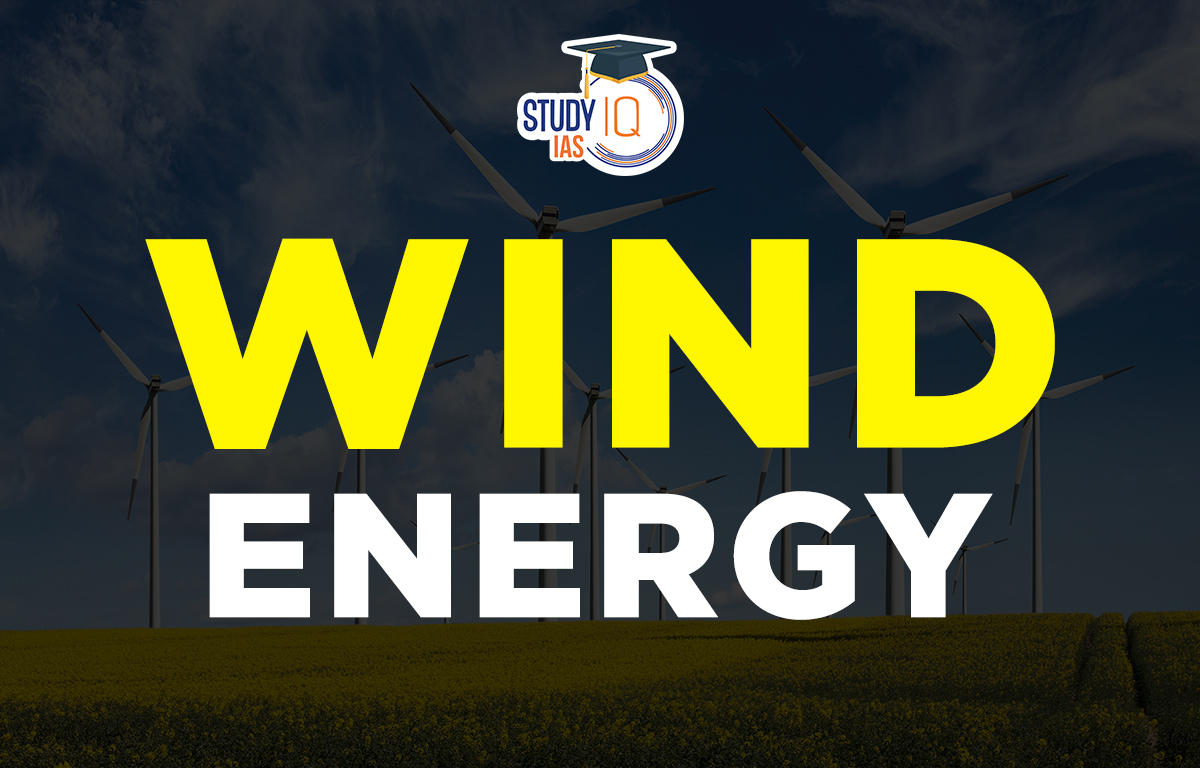Table of Contents
Wind Energy
Wind can be found almost anywhere on the planet, although the wind strength varies greatly. The overall resource is enormous. It has been discovered that wind-generated electricity may be easily integrated into regional or national grid systems. There could be a point where wind energy accounts for roughly 20% of total electricity usage. Today, there are mainly two types of wind energy:
- Onshore wind farms are substantial on-land installations of wind turbines.
- Offshore wind farms are structures situated on the water.
Read More: Biomass Energy
Wind Energy in India
Asia accounted for around 50% of the wind power generation capacity. Wind Energy projects in India total 13.4 GW at this time, and they are anticipated to drive market installations through 2024. India is anticipated to add 3.2 GW in 2022, 4.1 GW in 2023, 4.6 GW in 2024, and then 4 GW and 3.5 GW during the following two years.
Since 2017, the pace of wind sector installations in India has slowed. Only 1.45 GW of wind projects were installed in 2021, largely as a result of the second wave of Covid-19 and supply chain issues. Despite a significant decline in the nation’s annual market, China led the new installations. Europe and North America account for the rest of the 50%.
Read about: Hydropower Plants in India
Wind Energy Potential
India has a wind energy potential of roughly 60 GW. Since older wind power plants with relatively low capacity could eventually be replaced with newer ones that have a bigger capacity, it is quite plausible that they would rise dramatically. The waters are a different uncharted territory. Exploration in this region is still in its infancy worldwide.

India has a problem because cyclones routinely damage the country’s eastern shore. It may be able to investigate wind energy on the western side. India has a 7,516.6-kilometer-long coastline and ample opportunities to harness wind energy in all of its exclusive economic zones. According to the National Institute for Wind Energy, the western states have a greater potential for a consistent, steady, and swift wind flow, extending from Gujarat, Maharashtra, and Karnataka to Tamil Nadu and Andhra Pradesh (located in Chennai). The state of Tamil Nadu produced 9,075MW of wind energy in 2019.
Read about: Major Ports in India
Wind Energy Advantages
- An economical choice is wind energy. Because wind energy’s power is supplied at a fixed price over an extended period of time and its fuel is free, it reduces the price unpredictability that fuel expenses contribute to traditional sources of energy.
- The industry that produces wind power generates jobs. The wind sector is employing more people, and one of the professions with the highest growth is wind turbine technician. The wind helps with competitiveness and industry expansion.
- Power plants that burn fossil fuels, like coal or natural gas, generate particulate matter, nitrogen oxides, and sulphur dioxide, which have a negative impact on human health and cause the economy to suffer. Wind energy does not contribute to this air pollution in the same way.
- Acid rain, smog, or greenhouse gases are not caused by any pollutants that are released into the environment by wind turbines.
- There is an abundant and unrestricted supply of wind. In and of itself, the wind is a form of solar energy. The Earth’s rotation, the sun’s heating of the atmosphere, and the irregularities on its surface all contribute to the development of winds. As long as the sun is shining and the wind is blowing, energy generated by the sun and wind can be used to transmit electricity across the grid.
- Wind turbines may be erected on current farms or ranches.
Read about: Nuclear Energy
Wind Energy Disadvantages
Since Gujarat and Tamil Nadu have the most resource potential and most affordable land, these substations saw a concentration of wind farms. This led to bottlenecks, hindered project progress, and raised the price above solar power. The market for wind installation in India has a history of being unreliable. Since 2017–2018, there has been significant momentum developed in the pipeline, however excessive delays in project execution have called into question the assumptions of developers. The total amount of power distribution companies (DISCOM) dues has increased as a result of the COVID-19 pandemic and supply chain restrictions. In December 2021, there were 19,400 crores in unpaid RE generators, up 73% from the 11,200 crores in December 2020.
Read More: Minerals
Wind Energy Way Forward
- Governments must address problems including grid connection difficulties and planning roadblocks.
- The process for granting licences, including land allocation and grid connection projects, needs to be streamlined for policymakers to sustain and boost growth in the capacity of wind-based production.
- An early policy focus should be workforce planning for large-scale renewable energy installations, and grid investment must triple from current levels through 2030.
- Additionally, more public-private cooperation is required to address “the emerging geopolitics of the wind supply chain”.
- In order to combat the escalating competition for commodities and essential minerals, a stronger international regulatory framework is required.
Read about: Nuclear Power Plants in India
Wind Energy UPSC
India is making constant progress towards meeting its climate change obligations under the Paris Agreement (COP 21). India promised to take “a cleaner path than the one adopted by countries at a comparable level of economic development” during the climate summit. Wind energy is a form of renewable energy that harnesses the power of the wind to generate electricity. It is considered to be one of the most promising sources of clean energy, and its use is growing rapidly around the world.
Read More: Iron Ore





















 WhatsApp
WhatsApp